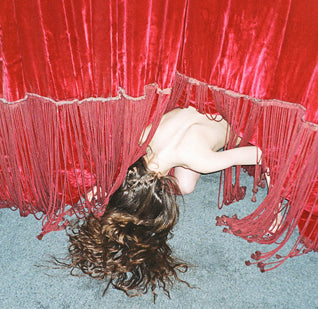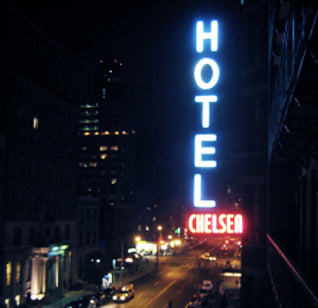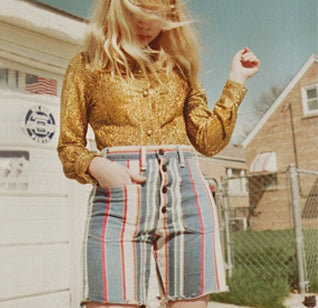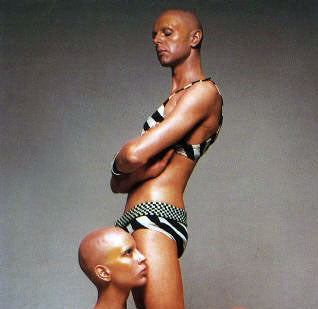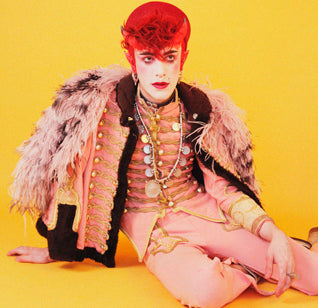THE THEATRE OF FASHION
The catwalk’s new aim to entertain
by Maria Raposo
The fashion crowd spends fashion week in a frenzy of iphones and Instagram. With the world at their fingertips, everyone is part of the media circus. Live streaming invites millions to join the virtual front row, reinventing Fashion week as pure entertainment. Fashion no longer belongs to industry insiders but to everyone with access to a phone or computer. Today fashion is the new theatre – wowing the crowd while charming the critics.
With large audiences watching, fashion has evolved to a point where the focus falls not only on the clothes but on the creative vision and supporting production. Set design has reached whole new levels, blurring the line between fashion and fantasy. But by transforming the catwalk, as well as the model, fashion maximizes its capacity to create. As a form of expression, clothes have their limits but the catwalk experience as a whole has huge potential.

Rachel Feinstein sculpture for Marc Jacobs, FW12
This recent emphasis on scenography transports the front row to dream-like worlds. For his FW12 show, Marc Jacobs worked with sculptor Rachel Feinstein to craft a backdrop of gothic ruins and for the Louis Vuitton SS12 show, the designer envisioned an enchanted landscape, complete with carousel.
The sets of Chanel have always pushed the boundaries of imagination; Lagerfeld’s catwalks have seen a giant globe, a forest of wind turbines and nine meter icebergs.
In New York this week, Thom Browne fully embraced the idea of fashion as theatre, transforming a Chelsea loft into a Catholic Church. Models kneeled at the altar amidst candlelight and heavy clouds of incense – creating an electrifying atmosphere. Through the show, Browne asserted himself as more than a designer; also claiming the title of director, entertainer and visionary.

Chanel Ready to Wear, SS13
Last month, the theatrical appearance of Schiaparelli’s haute couture models seemed more suited to a children’s cartoon than the catwalk. Creative director, Marco Zanini sent fairy tale figures down the runway – we saw blue hair, Napoleonic hats and bulbous silhouettes. Each fitted a social stereotype; there was the geisha, the evil stepmother and the damsel in distress.
Fashion is an escapist industry and Schiaparelli’s caricatures reiterate the fantasy element. In the past, the focus was about aspiration in a way that was very personal; if YOU wear this, YOU will be beautiful. But today, in a harsh economic climate imbued with social clashes and environmental concerns, designers also appeal to our discontent with society.
The SS14 haute couture shows saw Chanel escape from reality into utopian white. Lagerfeld created something so pure; it could not be touched or tainted by the outside world. The glistening set saw two sweeping staircases flank a miniature orchestra. A swan-like Cara Delevingne glided toward the audience in a glittering bridal gown – a five year old child holding the trail.

Backstage at Schiaparelli SS14 by Kevin Tachman
At London Collections, several designers left the present entirely – retreating to the safe nostalgia of the past. The theatre of fashion has become an exercise in reshaping the world as each designer sees fit. Some escape to the past, others to the future – either way reflecting public discontent with the present.
Saville Row, Woolmark and St James showcased their latest collection inside a glass box, designed to look like a pre war office. Kit Neale retreated to memories of his own childhood and both Christopher Shannon and Hunter Gather revisited 70s punk.
Fashion’s new found theatrics are a reflection of our image obsessed culture. Our society is swamped by Hollywood special effects and pictorial news feeds, making us crave constant visual stimulation. The runway is not exempt from the new rules inflicted on the world by the internet; rules which dictate brand success via viral sensations. To get the internet talking, shows must not only impress the internet elite - the Anna Wintour’s of the world – but also entertain the masses.












